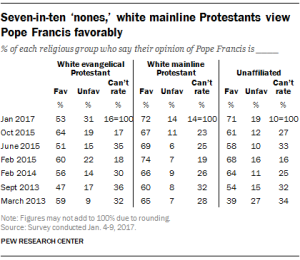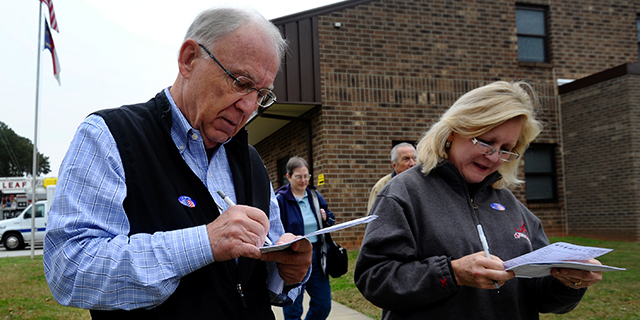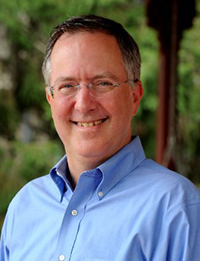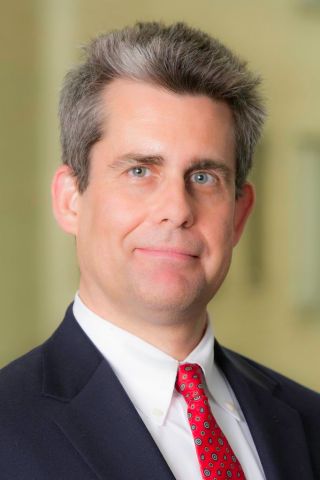

A primer on exit polls and voter surveys for the 2018 midterms can be found here.
As millions of Americans watch election results roll in on Tuesday, they’ll learn a lot more than whether Hillary Clinton or Donald Trump will become the 45th president. They’ll be told such things as how college-educated Republican women in Florida voted, what issues drove voters to the polls in Ohio, and how many of Utah’s Mormons cast their ballots for independent candidate Evan McMullin.
The source for those sorts of detailed analyses of the electorate is Edison Research. The Somerville, New Jersey-based firm has conducted exit polls for the National Election Pool (a consortium of ABC, CBS, NBC, CNN, Fox and The Associated Press) since 2003 – originally in conjunction with Mitofsky International, and since 2006 on its own. But just how does Edison do it?
Joe Lenski, Edison’s co-founder and executive vice president, said the firm will interview voters as they leave the polls at nearly 1,000 locations (a random stratified probability sample of the more than 110,000 physical polling places across the country). And since Edison expects between 35% and 40% of the vote to be cast before Election Day, it also is conducting a phone survey of early and absentee/mail voters, a process that began earlier this week.


The exit poll is a major operation. Edison expects to survey about 16,000 early and absentee voters by phone, Lenski said, and another 85,000 or so voters in person. “Between exit-poll interviewers, vote-count reporters, supervisors driving around checking on sites, and the two very large phone rooms we’ll be operating on Election Day to take in those results, we have close to 3,000 people working for us on Election Day,” he said.
The exit poll is more a set of interlocking surveys than a single, uniform poll. Aside from the phone and in-person components, Edison will field state-specific questionnaires at 350 of its 1,000 or so polling locations, in addition to the national questionnaire all respondents receive. The idea, Lenski said, is to be able to ask about issues that might be particularly relevant in key states.
“In Utah, for example, which has a large Mormon population, we’ll have questions specific to that population,” he said. “And you’ll see bigger state sample sizes in the big battleground states like Florida and Ohio.”
Rather than conducting oral interviews at polling places, Edison gives respondents written questionnaires to fill out. There are a couple of reasons for that, according to Lenski.
“One, we try to make the experience of registering your vote on the exit poll as close as we can to registering your vote at the polling place,” he said. “The other reason is that we don’t want to interfere with the election process, and asking people who they voted for as they’re leaving the polling place could be overheard by people going in. One of the reasons we get cooperation from election officials is that we can confirm that those questionnaires are private and confidential. There’s no notation on the questionnaire as to who filled it out.”
Edison’s response rate on its exit polls is considerably higher than is typical for phone surveys, Lenski said – about 45% of the voters the firm approaches agree to fill out questionnaires. But, he added, “Response rates in exit polls have gone down, but a lot more gradually than with traditional telephone surveys. When I started in this business, the response rate was more like 60%.”
That being the case, Edison’s field researchers try to address nonresponse bias – that is, the risk that the firm’s sample may not be representative of the entire electorate because of who chooses not to participate.
“Since we are at the polling place, our interviewers can record some characteristics of voters who decline to take part in the survey – approximate age, gender and race – so we can adjust our results for those factors,” Lenski said. “But there are other items we can’t account for visually. People don’t have a D or an R stamped on their foreheads, and you don’t know as they walk past you whether or not they have a college degree.”
After the polls close and actual results begin to be released, Edison will factor them in. If the returns differ markedly from the exit-poll results, the firm will update its analyses and projections accordingly.
“We will know shortly after the polls close,” Lenski said. “We’ll have individual precinct results from all the locations where we conducted interviews, so we’ll know how much understatement or overstatement for the candidates we have. Our calls are based on all the information we have at the time – exit polls, returns from sample precincts and county results from AP – and we may re-weight the exit poll results later in the evening to match the vote estimates by geographic region.”
The exit poll, he said, “is the one survey out there where you get evaluated immediately. We’ll process over 100,000 interviews, and within two hours we know how well we did.”
As early and absentee voting and vote-by-mail have become ever more significant, Lenski said, he’s also learned how those alternatives differ from each other.
[but]
Colorado, Oregon and Washington are the only three states that conduct their elections entirely by mail, and Lenski has noticed trends based on when ballots are turned in.
“The pattern has been that the later-returned ballots in those states tend to be more Democratic and the ones turned in earlier tend to be more Republican,” he said. “One other thing we’ve seen sometimes is that the ballots turned in earlier tend to get counted first on Election Day, so that’s something we have to consider when we’re making our projections.”
“It definitely adds a source for more potential bias or error,” he added. “If Colorado or Arizona, for instance, looks like it might be a close state, we might be a lot more cautious about calling it until more actual votes are released.” (In Arizona, a normally Republican state where polls show a close race this year, two-thirds of the total 2012 vote was cast absentee.)
Besides the general-election exit poll, Edison also conducted exit polls during the Democratic and Republican primaries and does similar work in other countries. Overall, Lenski said, only 40% of Edison’s work is election-related. The firm’s main business is consumer research, tracking everything from what songs radio listeners prefer to which types of ads are most and least effective.
But the presidential exit poll is Edison’s highest-profile project, and the one that’s hardest to pull off successfully. In fact, Lenski said, the firm starts the process of picking its sample precincts more than a year before Election Day.
“A typical Election Day for me starts a little before 6 a.m., and I’m usually up for about 36 straight hours,” he said. “Hopefully I’ll have time on Wednesday to collapse and catch up on two days’ worth of sleep.”
